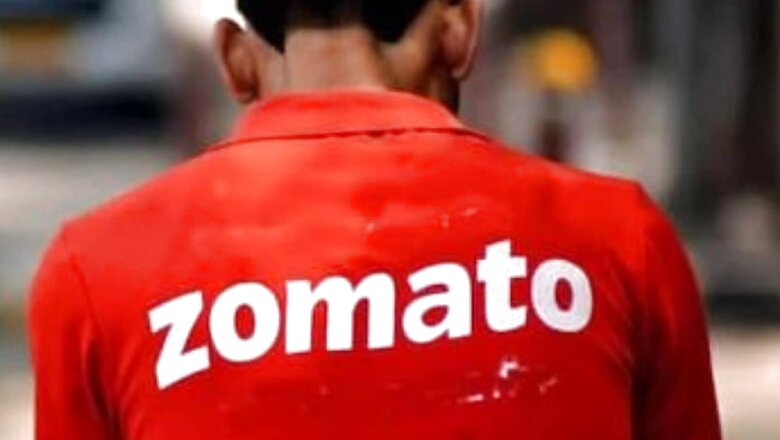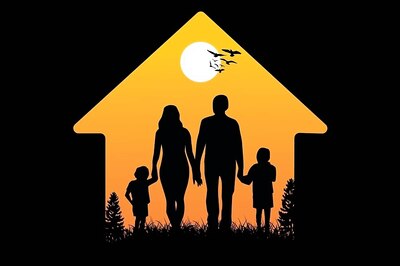
views
The internet model of a single winner that controls everything from supply chains to payment systems is creating fragile, monopolistic ecosystems that can potentially harm society. Lobbies might work toward perpetuating this model for short-term gains. But they harm the economy and ecosystem of suppliers, vendors and even retail investors by harming markets and reducing the points of failure to a few, “too-big-to-fail” entities.
The challenge of this “winner-takes-all” (WTA) model in the corporate world is that the competition has to be decimated with whatever means necessary, the ultimate objective for the winner is a monopoly (the only buyer) and a monopsony (the only seller). There is no room for second or third player in this model.
The WTA model requires an enormous amount of funding – business fundamentals such as profits or even revenue are not important. The model’s assumption is that equity can fund losses; revenues are not important until such time that there is only one player standing. Basically, billions of dollars are pumped into a single unicorn ($1 billion-plus valuation) to make it a deacon ($10 billion-plus valuation) so that it can decimate the competition by deep discounting the service or product being offered. This predatory pricing model affects innovation and growth in the economy, because a single player controls everything.
For instance, a large part of the e-commerce model is based on free delivery as that is the most important cost that determines whether a consumer will buy – online or offline. It also changes consumer behaviour from buying bulk in one visit to an offline store to buying more spontaneously one item at a time online. For a long time the e-commerce companies have kept the delivery pricing zero. So much so that it has made it impossible for delivery firms to survive. Investors in delivery firms also follow the WTA model that has resulted in consolidation – only one strong player will stand, not multiple players.
The Zomato-Blinkit Case Study
Even the latest acquisition of Blinkit (Grofers earlier) by Zomato is a step where a restaurant or food aggregator is merging with a grocery delivery company. Zomato, which pumped in $100 million for around 10 per cent stake in Blinkit in 2021, seems to be acquiring it to prevent a write-off of its investment. Zomato is a publicly listed company and this acquisition of Blinkit is private equity funds’ losses being written off by retail investors. This is not a good way of acquiring private losses by a public company and goes against several corporate governance norms. It is strange that the board of Zomato chaired by veteran financial expert Kaushik Dutta is allowing this all-stock-deal to happen.
Zomato and Swiggy are food aggregators and suppliers. They decided to diversify into grocery deliveries as they thought it was a natural progression from food delivery. This category was already dominated by BigBasket and Milkbasket and Amazon also entered the grocery space and the margins went down.
Swiggy and Zomato launched grocery delivery services in their existing apps. Swiggy still does it through its Instamart service. Zomato discontinued the grocery delivery service in September 2021 after burning millions. It then decided to tap this segment through its $100 million investment in Blinkit. Blinkit needed this money because it was bleeding cash. The idea was Zomato would focus on its food delivery business and ride Blinkit’s growth in grocery delivery through its investment.
But now, with the acquisition, the risk is back to square one. Blinkit losses piled up as Zepto emerged with a new model of 10-minute delivery of groceries. Now, more delivery persons and a bigger network was needed just to remain in the game of winner-takes-all. Zepto is also bleeding but it has been able to remove at least one competitor from the market. Zomato, meanwhile, is being trolled for its 10-minute food delivery promise, something that is not just unnecessary but will lead to more burn of public money. Zomato should drop even the idea of such a service; they can’t keep decimating the competition or follow the WTA model in grocery and food delivery business.
This is not going to be the end of the consolidation. Sooner or later Zomato and Swiggy, the only ones left in the food aggregation business, will consider a merger. Because, they have a common shareholder, SoftBank. The largest private equity firm in the internet space is a believer in the winner-takes-all-model. With liquidity drying up as the interest rate cycle picks up, Softbank will start looking at exiting some of its frothy internet investments. Assuming Zomato and Swiggy merge, what will happen to the grocery market: will it still exist or will it be left to Amazon and Tata-owned BigBasket?
More important, what will the consolidation of the food aggregators or even the delivery companies mean for the consumer, ecosystem or overall risk? The interesting thing is that initially it does not affect the consumer as the pricing of the products remains the same. The Competition Commission of India, in a 2019 report, had for the first time admitted that the present law is inadequate to address the monopolisation by internet platforms. CCI initiated an investigation in April 2019 into the dominant position of more than 98 per cent market share held by the Android operating system in the smartphone market in India. Subsequently, CCI came out with an order against Google.
Look Beyond Competitiveness
The monopolistic or single-player control over segments of the digital ecosystem is also a long-term concern from a risk perspective. The Russian invasion of Ukraine has shown that American companies that provide global services are quick to follow the diktat of the US administration when economic sanctions are imposed. More than 400 US companies have exited Russia, including companies like Cogent Communications that used to offer high-speed internet access.
ALSO READ | With West’s SWIFT Punishment to Russia, India Must Offer the World a Better Alternative – Its GPI
Payment services of Google and Apple have been withdrawn from Russia, disabling consumer payment internet services for micro-payment. This has resulted in a near-collapse of digital services in Russia. This is the first time that digital services that enjoy monopoly in a sector have been weaponised in a war. This has raised several issues about not just the WTA model but also ownership of these companies as a country level risk.
Until now, critical internet infrastructure was defined from the perspective of hard infrastructure telecommunication networks, and lately data centres with data localisation. Is there now a need to look closely at some service providers on the internet as also part of the critical infrastructure services that need to be ring fenced or protected so that they are not exposed to risk from economic sanctions from any country?
For instance, as e-commerce expands it will become the digital commercial lifeline of the country. Any disruption in the e-commerce service or any risk that a crucial service will face will have an economic impact on the country. How will India look at players in this segment of the industry? Is there a need for de-risking some of the crucial segments of the internet and digital services so that any disruption due to any economic sanction does not make the Indian system fragile?
For instance, are pharmaceutical e-commerce companies crucial for the India’s healthcare system? Will a duopoly affect the growth or availability of medicines to India’s patients? Till now, the winner-takes-all models have only been seen from the competitiveness point of view. But other aspects of this model need to be studied as well.
K. Yatish Rajawat is CEO, Center for Innovation in Public Policy. He tweets @yatishrajawat. The views expressed in this article are those of the author and do not represent the stand of this publication.
Read all the Latest Opinion News and Breaking News here

















Comments
0 comment